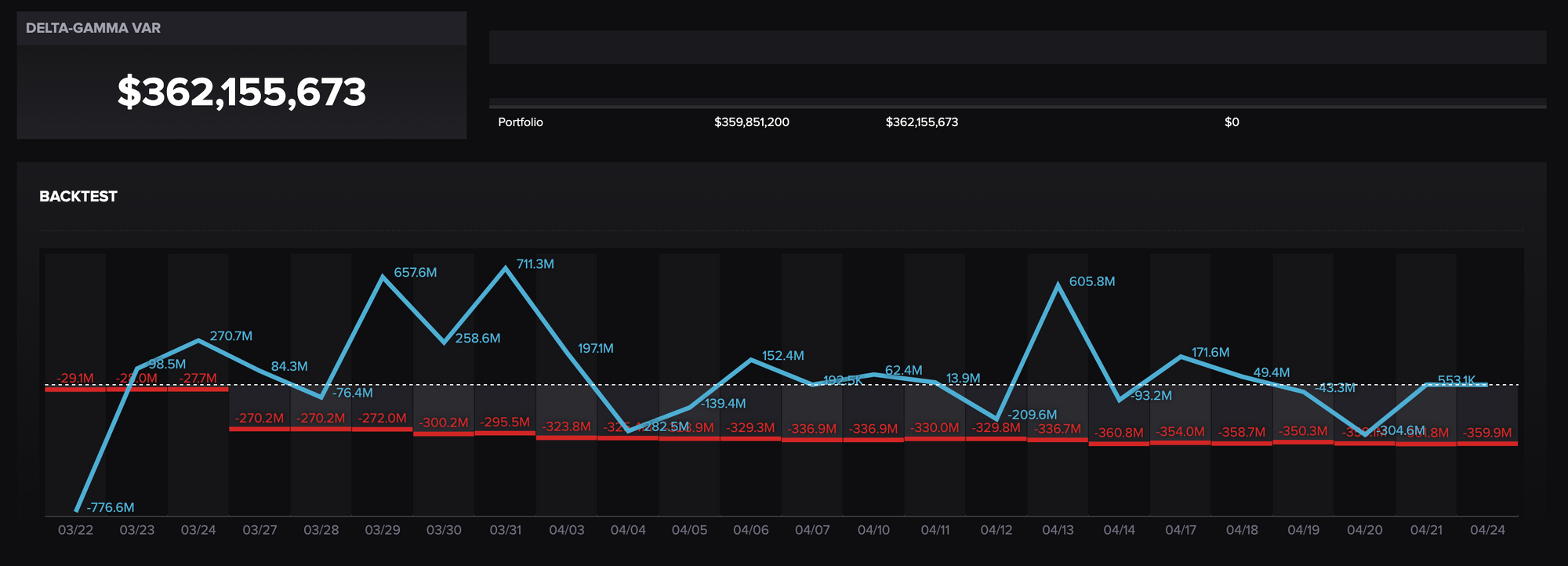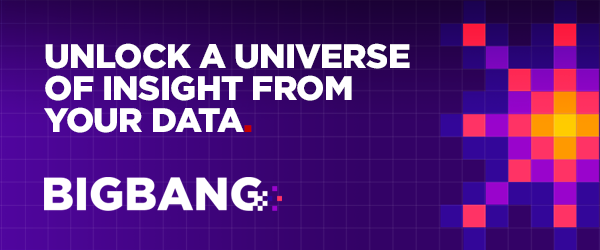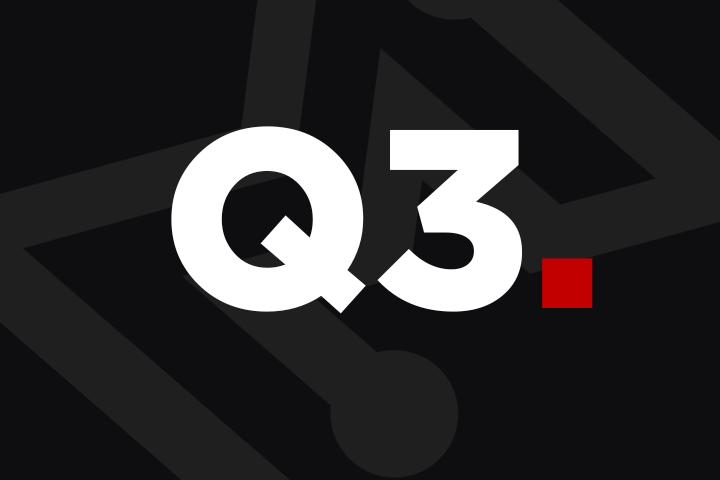Digitization vs. Digitalization in the ETRM/CTRM Industry

On a recent Commodities People panel, Molecule's Founder and CEO, Sameer Soleja, discussed digital transformation in the commodity trading risk management industry.
At the beginning of one of the sessions, panelists discussed the nuances between digitization and digitalization in the context of ETRM/CTRM software. They also discussed how each plays an important role in companies working towards a digital transformation.
In case you couldn't join, here are some of the highlights from the conversation and how we apply to our ETRM/CTRM software.
Table of Contents
I. What is Digitization in Commodity Trading Risk Management?
II. What is Digitalization in Commodity Trading Risk Management?
III. What is Digital Transformation in Commodity Trading Risk Management?
IV: Where is Molecule's ETRM/CTRM in its Digital Transformation Journey?
What is Digitization in Commodity Trading Risk Management?
Digitization is the process of converting existing data or other information into a digital medium. Digitization, or the transition from analog to digital information, is often considered the first step toward digital transformation.
Although digitization makes information easier to access and share, it's a much more basic function than digitalization. However, companies must digitize to take advantage of AI and ML.
The Role of AI and ML in ETRM/CTRM Software
Artificial Intelligence (AI) and Machine Learning (ML) are essential components of moving from the digitization and into the digitalization stage.
What people call AI today tends to be advanced ML - there is a broad spectrum of ML that is often branded as AI.
Because of AI and ML, ETRM/CTRMs can automate the following:
- Data collection
- Data analysis
- Forecasting
- Market changes
With AI’s ability to rapidly process large datasets coupled with its pattern recognition ability, trading surveillance processes can better isolate anomalous trading activity.
In turn, companies implementing advanced ML can quickly make more holistic, data-driven decisions. Teams can focus on more pertinent tasks instead of data collection and analysis.
What is Digitalization in Commodity Trading Risk Management?
Digitalization is a more complex process of digitizing business processes - rather than just information - to improve the functionality of the software you use.
During the panel, a poll asking, "What drives your digitalization efforts?" yielded the following responses:
- 31% of the audience responded 'competitive advantage'
- 31% of the audience responded 'control and transparency'
- 29% of the audience responded 'growth and revenue booster'
- 10% of the audience responded 'harmonization across the supply chain'
The results show the benefits of digitalization are (almost) equally valuable across the board. In addition to a competitive edge, digitalization promotes control, growth, revenue, and standardization across systems.
Digitalization allows businesses to automate the day-to-day processes of their employees using technology.

One of the ways companies can automate enterprise trading and risk management processes is through APIs.
APIs and ETRM/CTRM Software
APIs (Application Programming Interfaces) are standard functions and procedures that allow systems to communicate with another application or service's features or data. People can automate processes using APIs, such as building data lakes, trade capture screens, custom integrations, and more!
There are common industry-wide standards for APIs, like REST, JSON, and Web Sockets - many of which Molecule uses and implements. APIs have significantly helped companies on their journey of digital transformation.

What is Digital Transformation in Commodity Trading Risk Management?
Digital transformation integrates technology into all aspects of business. Digitization and digitalization are the steps companies can take toward digital transformation.
As discussed on the panel, digital transformation is about "pushing the envelope" and embracing innovation. It goes beyond digitization and digitalization because it calls for companies to constantly evolve and advance as new technology emerges.
A digital transformation strategy gives companies a competitive edge by showing customers they are willing to adapt and progress to be on the cutting edge.
Digital transformation looks different across each industry and company, so it's important to focus on individual goals and invest in relevant technology that helps you achieve those goals.
To truly achieve a digital transformation, however, it's not technology at the center but people prioritizing innovation and opportunity. A great company can only succeed with the best management and employees, and it's no different in the world of digital transformation.
Digital Transformation and Cloud ETRM/CTRM Software
Cloud technology has revolutionized the tech industry as well as the E/CTRM world.
"Cloud is an important driver behind digital transformation."
Although it's hard to pinpoint one definition, the cloud is essentially a network of servers that function in one centralized ecosystem. Therefore, data is processed in the cloud rather than on an individual internal hard drive - think Gmail.
According to AWS, the cloud promotes the following:
- Agility
- Flexibility/Scalability
- Cost-efficiency
- Global connectivity
Since all of these servers operate within one ecosystem, it's easier for them to communicate and interact with one another.
There are three main types of cloud computing:
- SaaS (Software as a Service)
- IaaS (Infrastructure as a Service)
- PaaS (Platform as a Service)
For on-prem legacy systems, each user is restricted to one physical server. Since software and infrastructure are restricted to one server and user, this is considered single-tenant software. So how do these companies get onto the cloud?
What is Cloud-Enabled ETRM/CTRM Software?
Cloud-enabled tech is a software system moved into the cloud instead of being deployed on-prem. Legacy E/CTRM systems were built to operate on-prem before tech was built to run in the cloud, so they can be very difficult and costly to move onto the cloud.
Cloud-enabled technology is typically single-tenant and often less scalable than cloud-native counterparts.
What is Cloud-Native ETRM/CTRM Software?
Cloud-native tech was built to thrive in a cloud environment, meaning cloud-native apps are "designed and built to exploit the scale, elasticity, resiliency, and flexibility the cloud provides." Since cloud-native apps share the same server, software, and infrastructure amongst multiple users, it's considered multi-tenant software.
Thus, cloud-native tech enables digitalization through modern technology, such as containers (software packages).
The cloud promotes agility, productivity, and collaboration. Compared to legacy solutions built on-prem, or even legacy solutions that have moved to the cloud without being rebuilt from the ground up, cloud-native technology is:
- Accessible
- Scalable
- Cost-effective
- Automated and time-efficient
Over the past decade, the industry has undergone its digital transformation with many newer cloud-native E/CTRMs challenging the limitations of longstanding legacy systems.
Where is Molecule's ETRM/CTRM in its Digital Transformation Journey?
Since Molecule is a cloud-native, multi-tenant SaaS ETRM/CTRM, digital transformation has been on our radar since day one. Innovation and cutting-edge tech have always been a part of who we are. Many of our values are at the heart of digital transformation.
So, what are some of these values? We're known to:
- Challenge the status quo
- Constantly innovate our own solutions
- Embrace bleeding-edge tech
- Set clear goals and use data to evaluate the best solutions
- Learn from seeing how others use technology
We were founded on the principle of innovation and a love for technology. Molecule was built in the cloud, so our team and customers don't have to worry about transitioning into the digital world - we're already here.
Just because we've already undergone our digital transformation doesn't mean we'll stop finding new ways to innovate and create the best software for our customers.
RELATED POSTS









